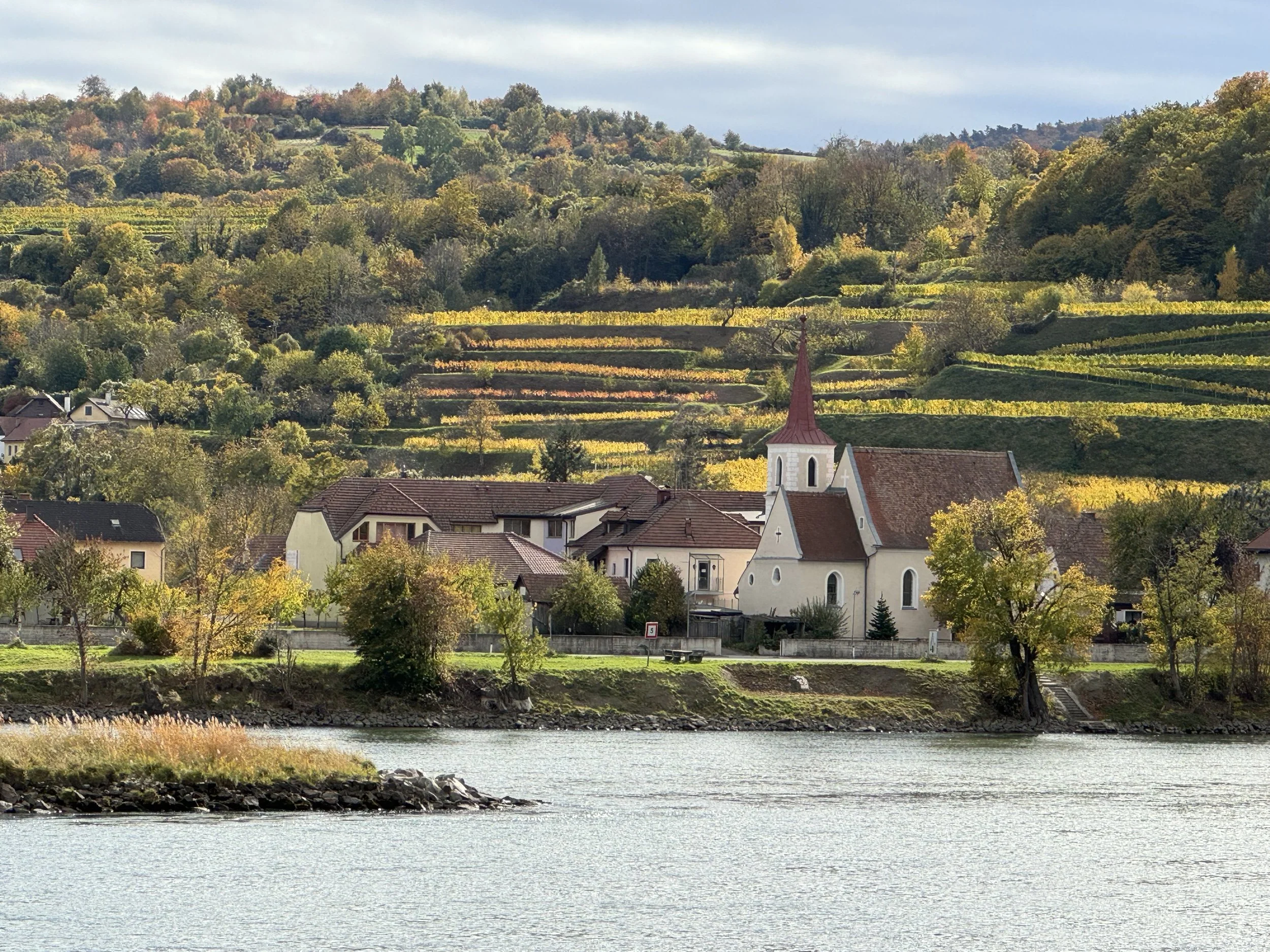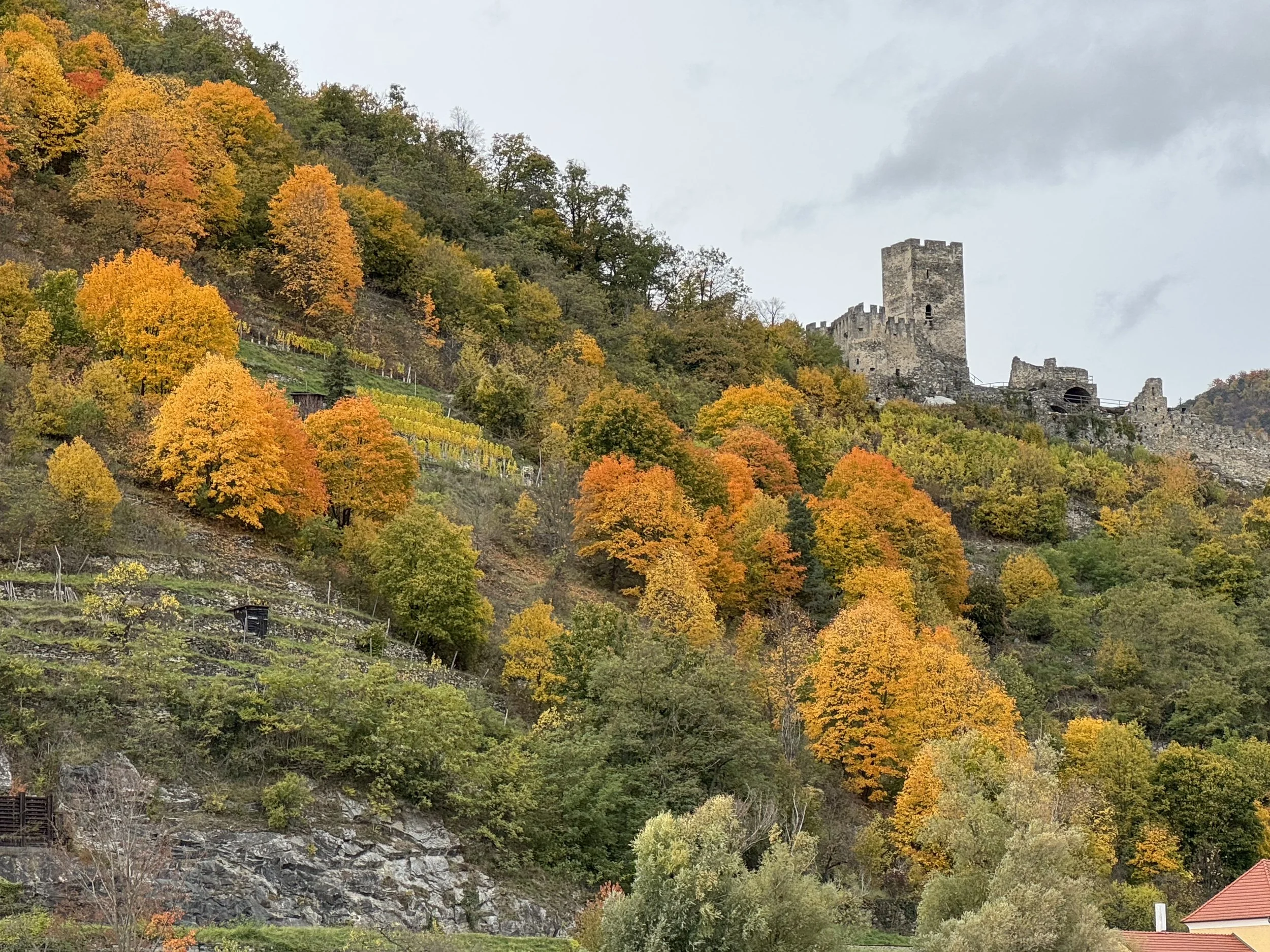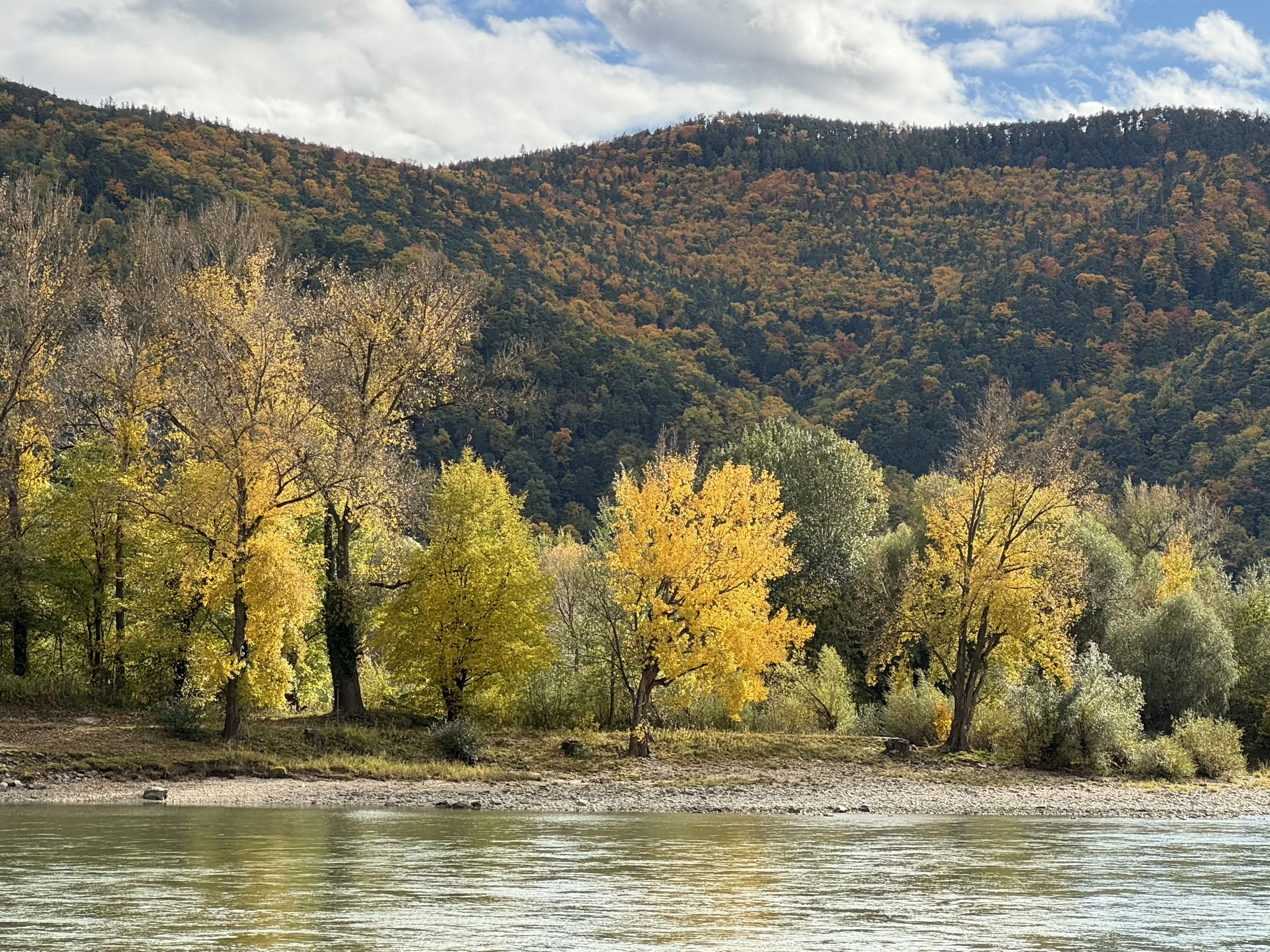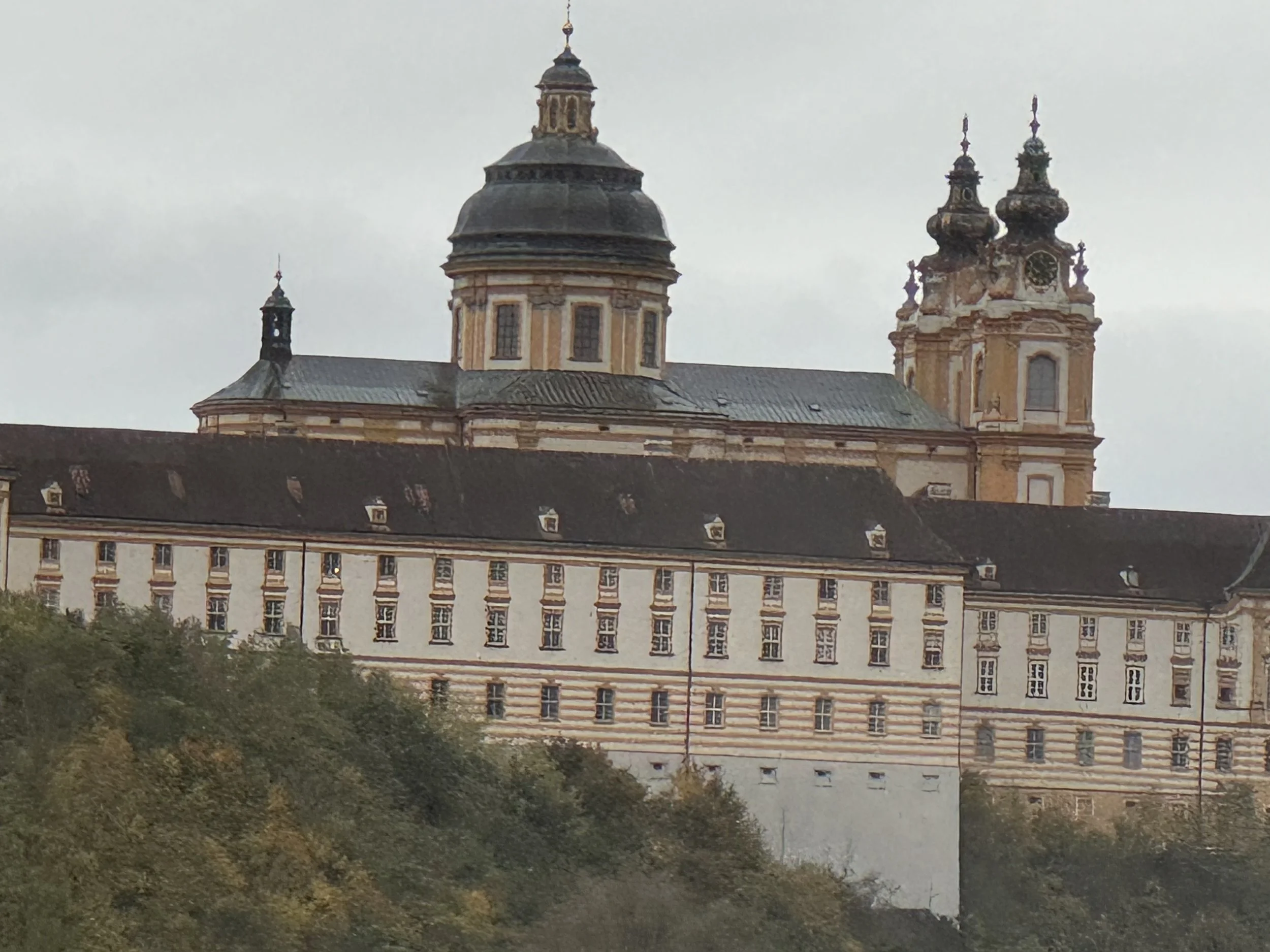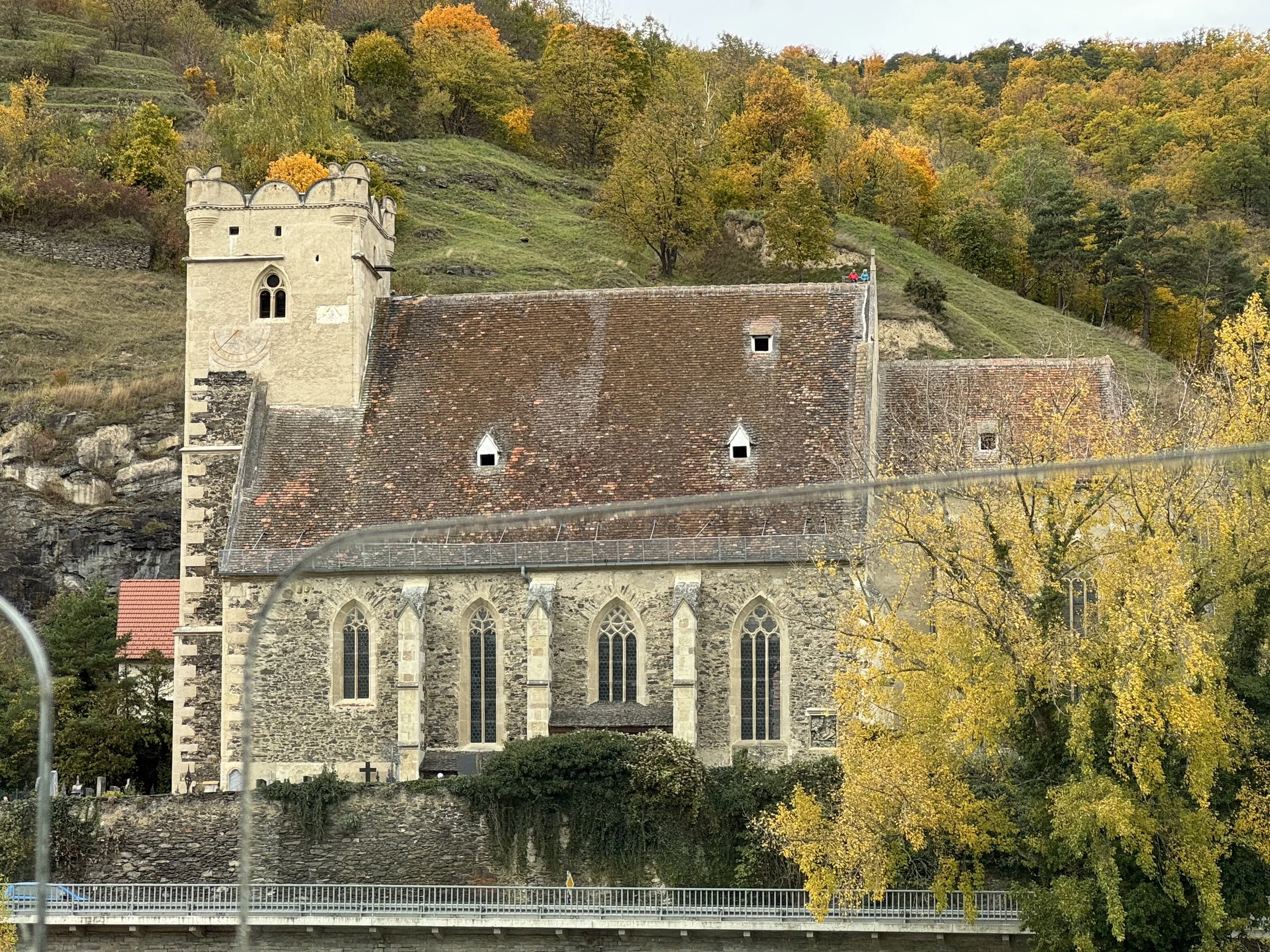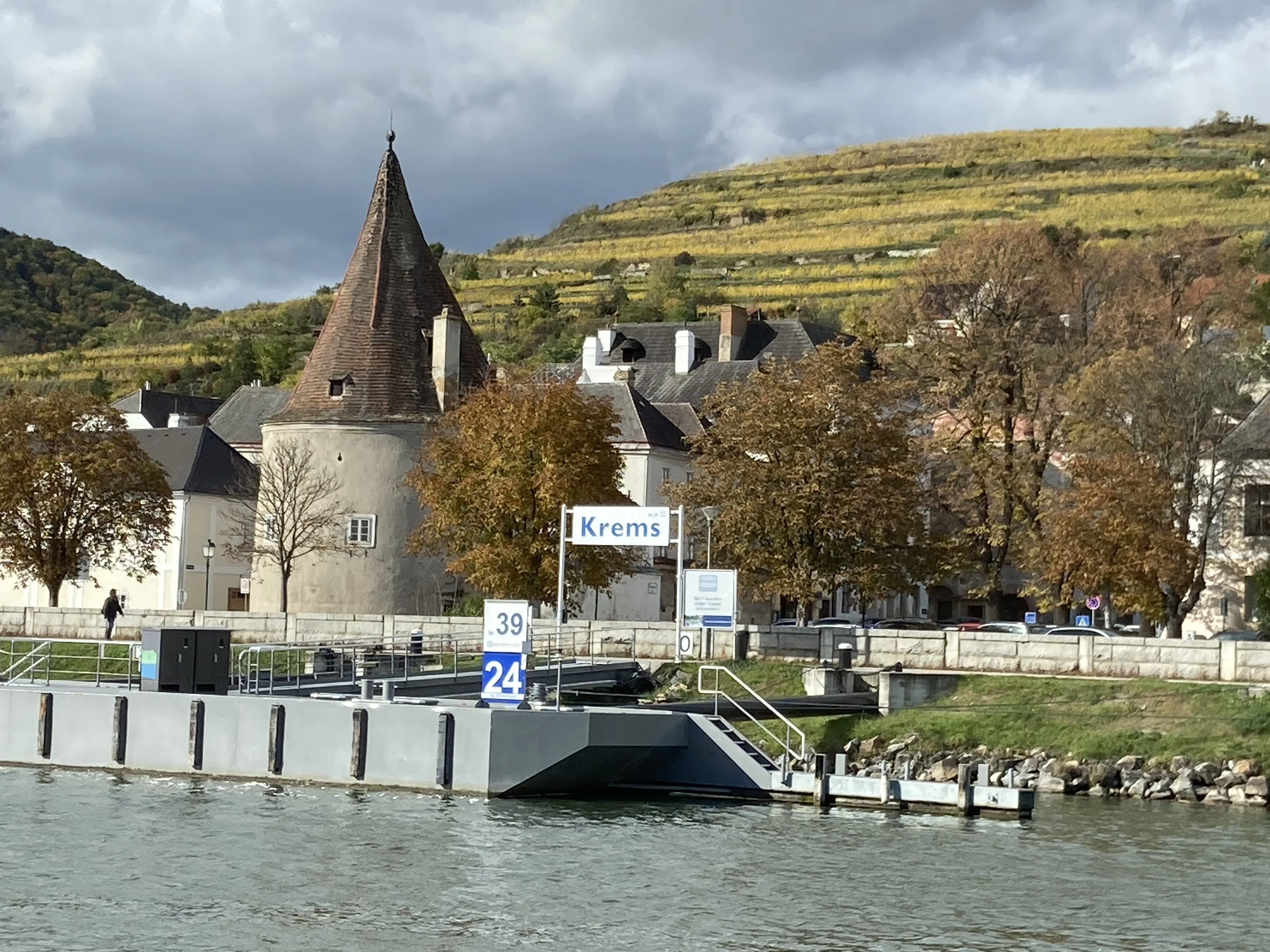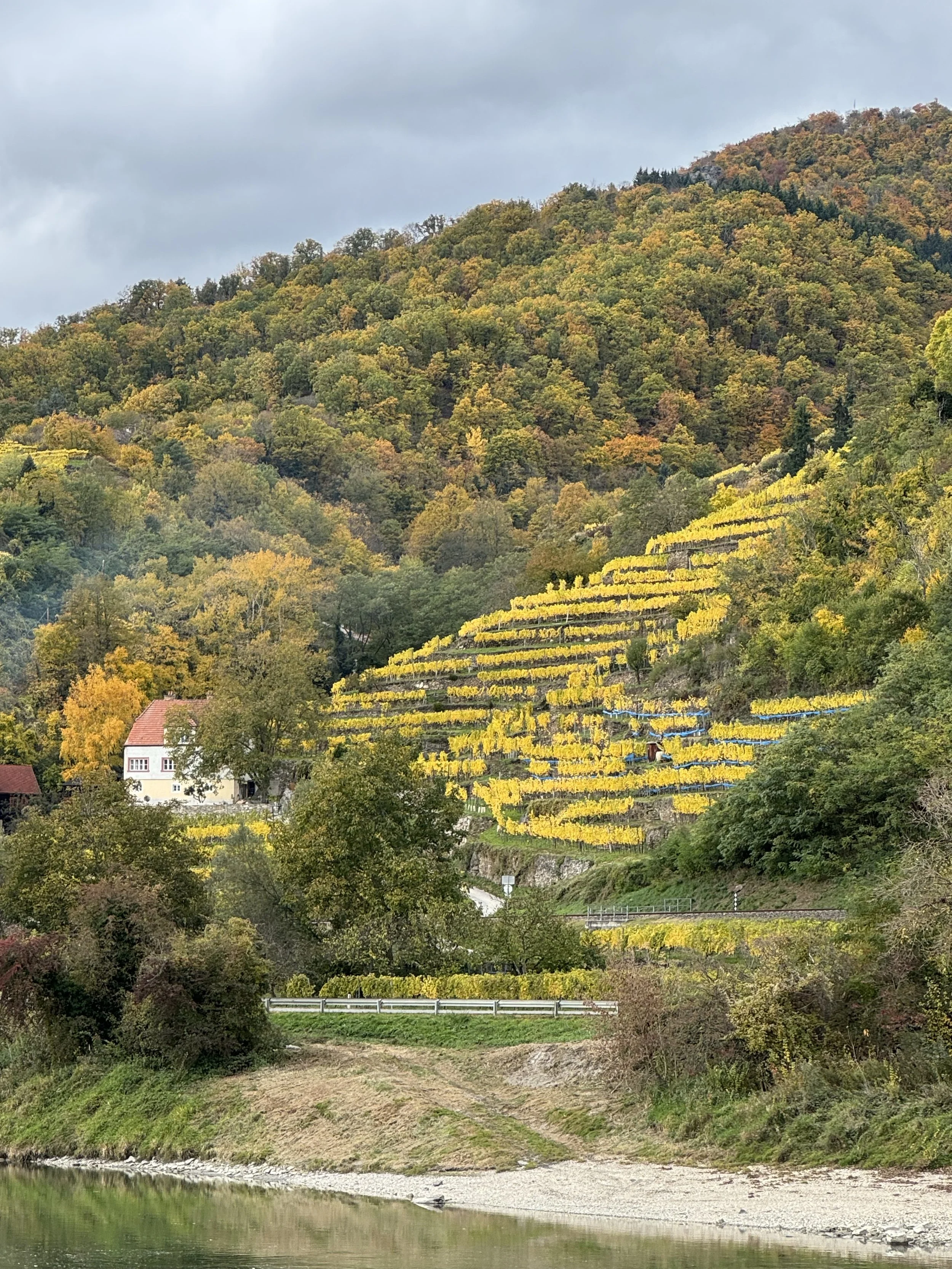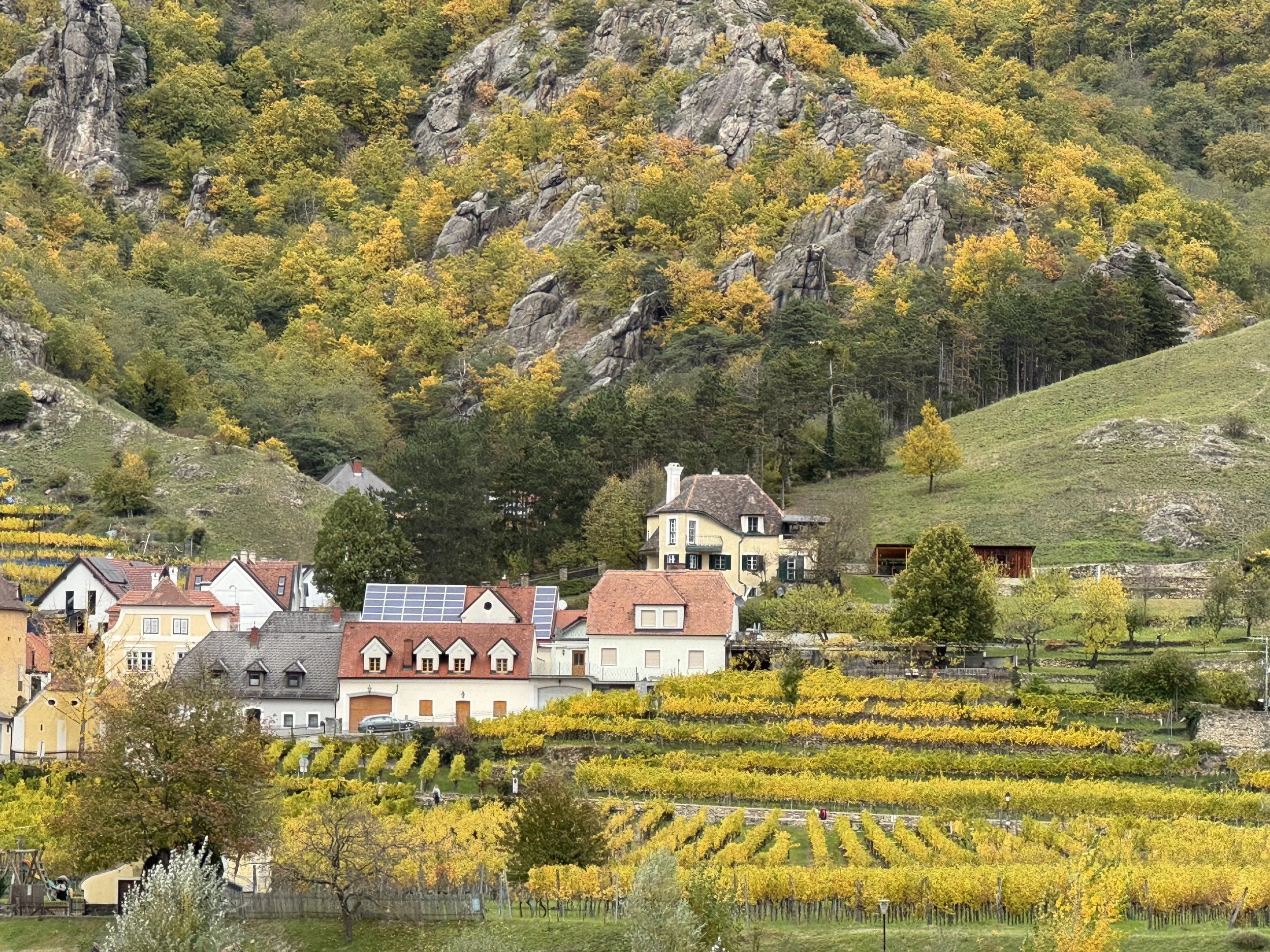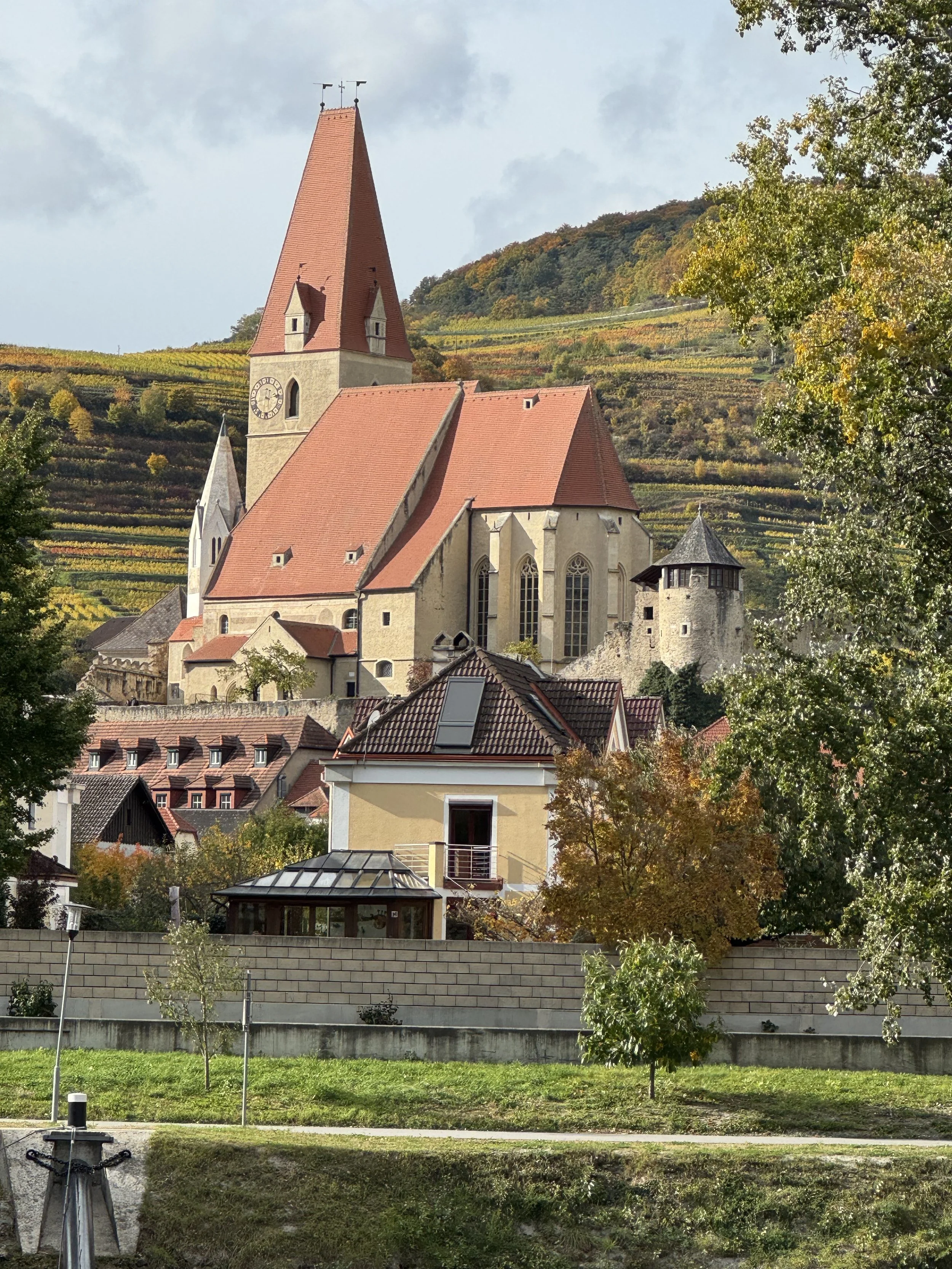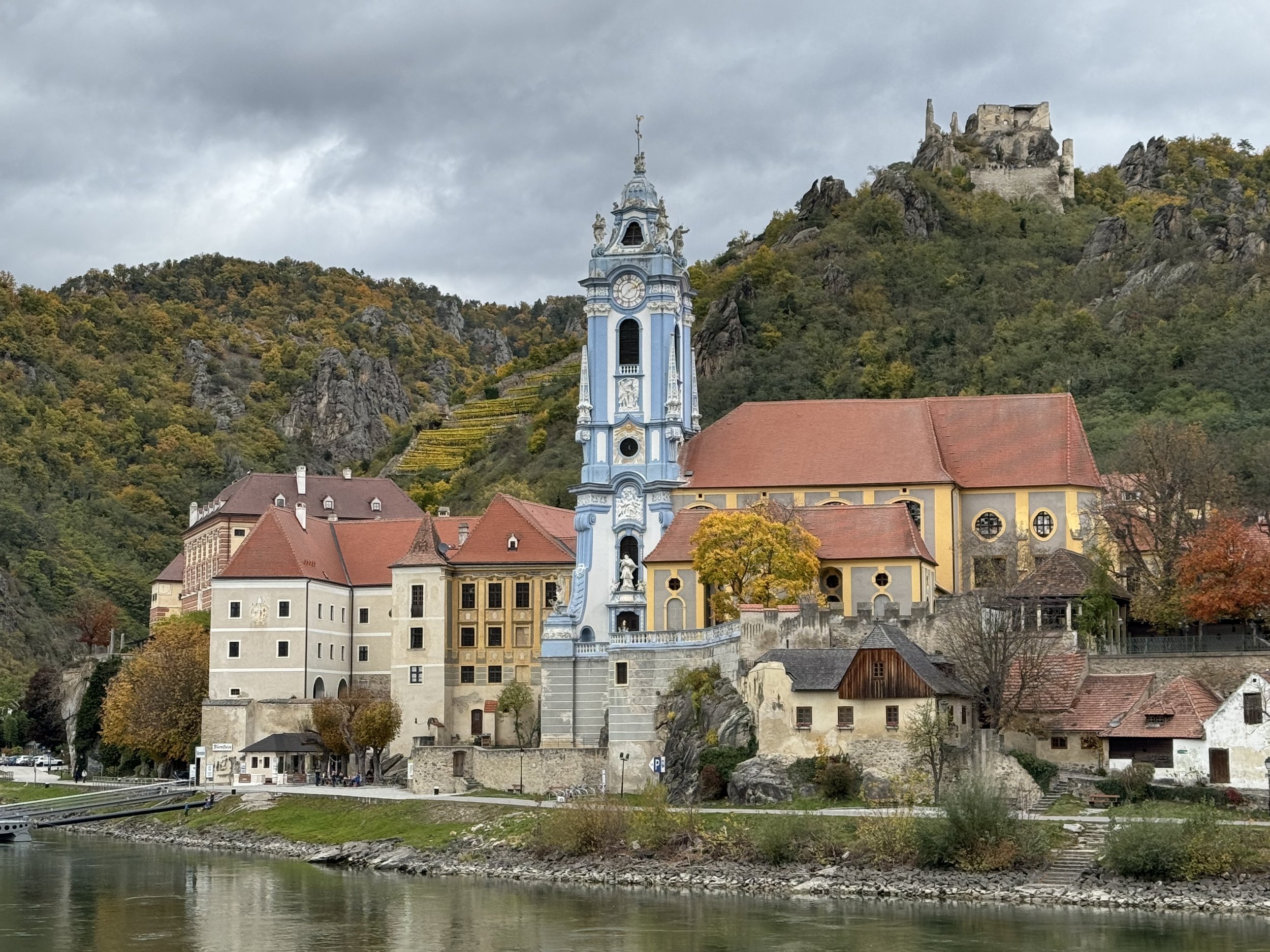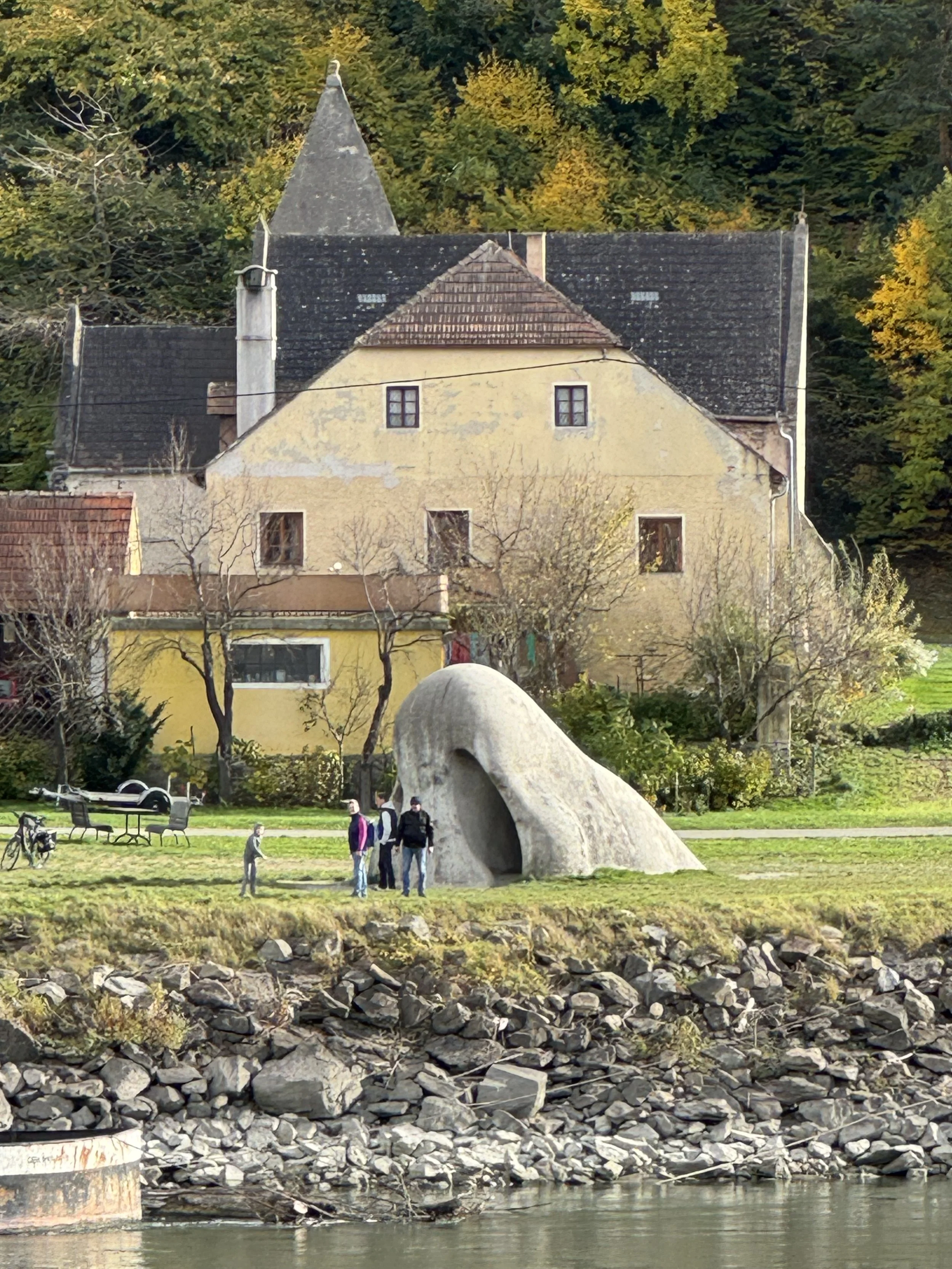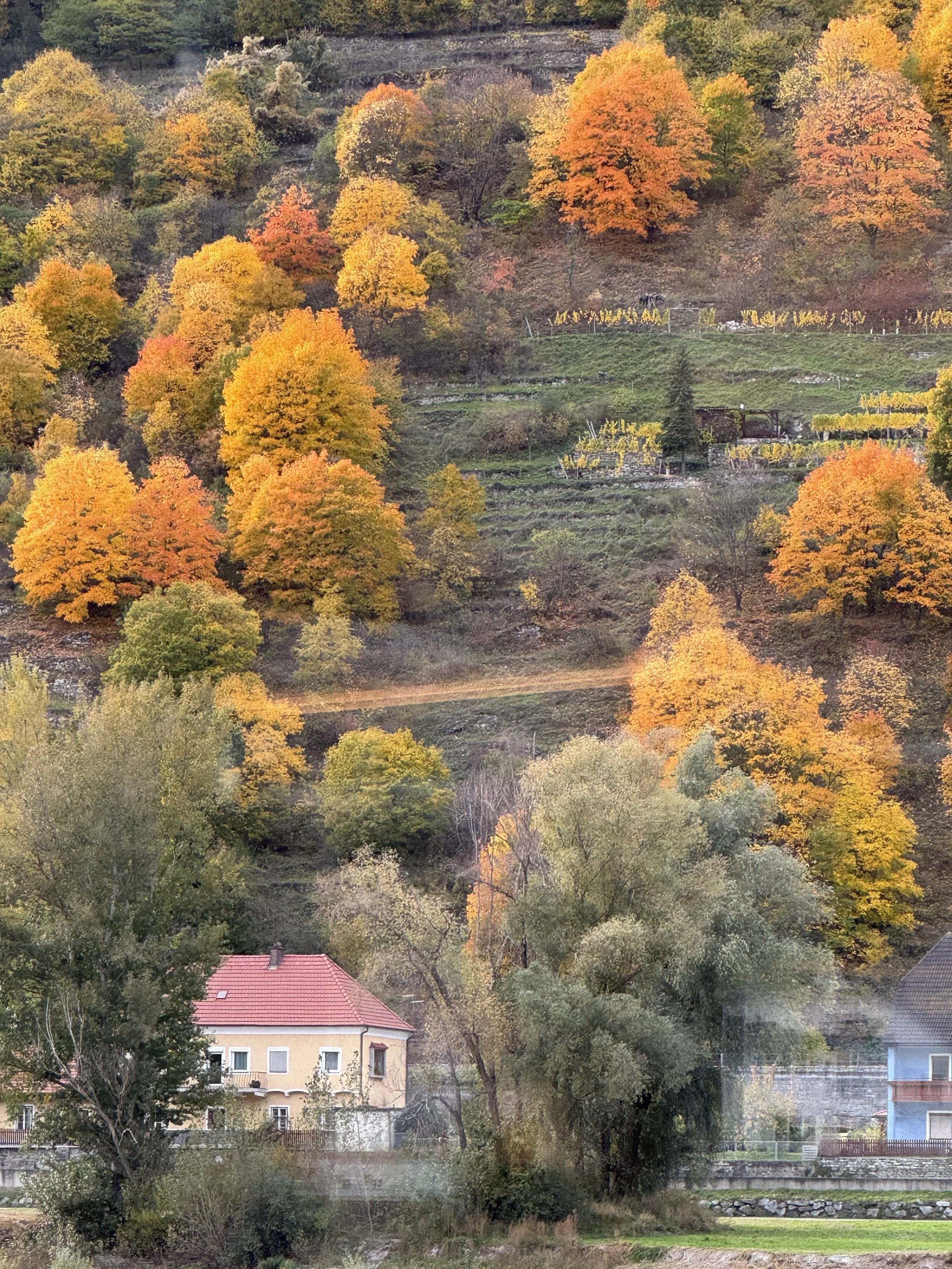Fall Color Along The Danube
The Wachau Valley runs for 18 miles along the Danube River as it winds its way through Austria. The entire stretch is a UNESCO World Heritage Site and it Is easy to see why – it has an abundance of riches in its history, amazing landscapes, colorful small villages, and castles.
Spitz, Austria
There is no better way to see the Wachau Valley than from the river, gliding slowly along and enjoying the sights as you pass by (perhaps with a glass of wine in hand and the company of good friends). And there is no better time of year to see it than during fall, when the changing leaves turn the landscape to gold.
I spent an afternoon sailing through the valley during the peak of fall color in late October. The afternoon was part of a week-long Viking Danube River cruise, sailing west along the Danube from Budapest, Hungary towards Passau, Germany, with much of the week spent in Austria. The entire cruise was wonderful; I will be writing more about the various places on the itinerary in the weeks ahead. But in terms of scenery, the Wachau Valley was the highlight of the trip.
The Hinterhaus Castle ruins above the town of Spitz surrounded by glorious fall color
The Wachau Valley lies between the town of Melk to the west and Krems to the east (though my cruise went in the opposite direction, upriver, going from Krems west toward Melk). The stretch is flanked by two famous Medieval abbeys – Göttweig Abbey, founded in 1083, in the east (below, left) and Melk Abbey founded in 1089 (below, right) to the west. Both sit high up on bluffs and act as “bookends” to the stretch of the Danube through the Wachau Valley.
Between the two abbeys lie wooded areas, agricultural lands, and terraced vineyards where primarily Grüner Veltliner grapes are grown. Dotted throughout the landscape are a series of storybook villages, small cottages, castles, and monasteries..
There are also churches in a variety of forms – some with tall bell towers, some with steep red roofs, others with colorful exteriors, such as the abbey at Dürnstein with its blue and white bell tower.
Higher up on bluffs sit castle ruins, including this one above the town of Dürnstein. Richard the Lionhearted was imprisoned in the castle the 12th century.
The ruins of Dürnstein Castle, on the bluff above town, where King Richard the Lionhearted was imprisoned
The Wachau Nose
Not everything is Medieval in the region – one very modern piece of art found along this stretch of the Danube is a giant sculpted nose.
The Wachau Nose is a landmark which suggests the importance of the sense of smell in wine tasting.
According to the literature provided by Viking, the model for the nose was the son of the mayor of the town of Rossatz-Arnsdorf, the city where the nose can be found.
The wonders of this valley can be appreciated at any time of year. But fall brings a unique view, as the trees and vines change from green to gold and fiery orange, adding a special bit of magic to the landscape.
